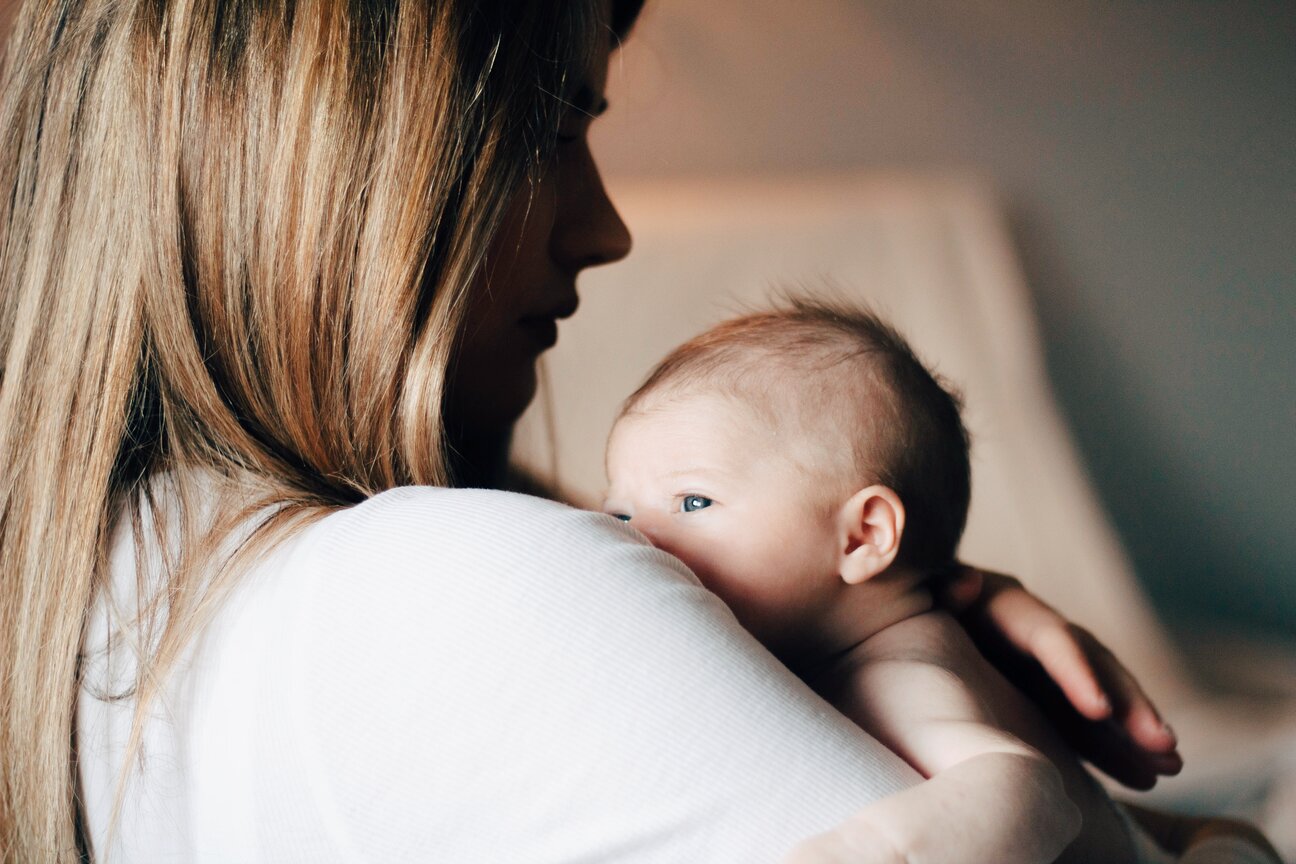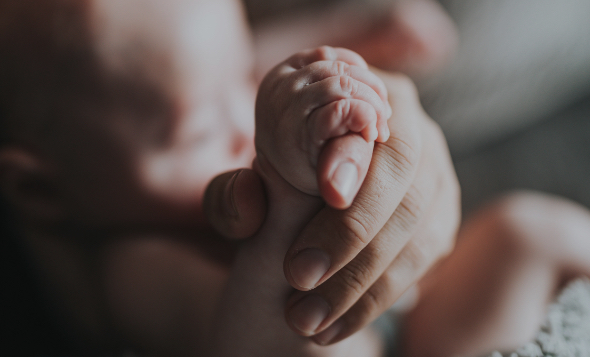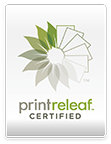


You may notice Braxton Hicks contractions around this time, and even before, this is your body’s way of preparing for birth by having a bit of a practice. These aren’t painful, you will just notice a tightening across your bump. If you think you may be in labour then it’s important to call your midwife, doctor or hospital for assessment.
Here are the tell-tale signs that suggest your baby is on the way!
- You lose your mucus plug – this is what sits within the cervical canal during pregnancy to protect your baby from infection. It may be a yellow colour or blood stained. Some people refer to this as a ‘show’ and it can be considered a very early sign of labour. It’s important to note though that some women can lose this plug weeks before they actually go into labour so it’s not the most reliable sign!
- Your waters break – this may be a big ‘gush’ of fluid or it may be a constant trickle, this depends on if your fore or hind waters break. If you experience any fluid leaking from your vagina then you must call your midwife, GP or hospital for assessment.
- You suddenly need to go to the toilet….immediately! This is because your baby’s head is pushing on your bladder and bowels.
- Back pain – again this is because of your baby’s head position, as it rests on your spine it can cause an uncomfortable feeling.
- Contractions – not Braxton Hicks, we’re talking about the real thing! Painful, regular tightenings across your tummy and then the pain passes as the tightening goes. Also you may feel like you have period pain. It’s time to call your midwife or the hospital when your contractions are 5 minutes apart and last around 60 seconds.
If your baby’s movements change or stop, you start to lose blood, you’re in a lot of pain or your waters are a strange colour or have a foul smell then you should contact your hospital immediately.
The 1st Stage of Labour
The first stage of labour includes the latent and active phase of labour, this is often the longest stage of labour. It usually starts with one of the tell-tale signs labour is starting that are mentioned above. The latent phase lasts until your cervix is 4cm dilated and you are having regular contractions. Some women can stay in the latent phase of labour for days before active labour starts, especially if this is their first labour. Most women choose to stay at home during the latent phase of labour and then go into hospital once active labour has begun.
During the latent phase, some women are able to just carry on with their day as normal, it’s important to try to eat and drink when you can to maintain your energy levels for giving birth. Staying up and active can help your baby to move down into your pelvis and will help your cervix to dilate. However it’s also important to be comfortable and rest if you feel you need to.
Pain Relief Options
If you choose to stay at home during the latent phase then here are some pain relief options should you need it:
- Paracetamol
- Warm bath
- TENS machine
- Massage
Every woman is different during labour, some may want to have all the pain relief options available whereas some may not have any! Some women find that gently moving around can help ease pain whereas others find a comfortable position and want to stay there! Some women attend a hypnobirthing course when they are pregnant which is a type of pain management that can be used during labour, a lot of the techniques include breathing, relaxation, meditation, visualisation and mindfulness. Some women choose to have the lights dimmed and have their favourite candle burning during labour as this can create a calm and soothing atmosphere which can help with hypnobirthing. Once in established labour you will need to make your way to either the hospital or birthing unit if this is where you have chosen to give birth. If you are having a home birth then this is the time to call your midwife if you haven’t done so already.
As labour progresses then you may want to try some different pain relief methods.
Gas & Air
Gas and air is a fairly common method of pain relief for labouring women, it won’t completely take the pain away but it can reduce the intensity and make it more bearable. A lot of women like gas and air as they are fully in control of how much they have, this is because you breathe it in through a mouthpiece. There are no harmful side effects of gas and air to you or your baby but it can make you feel nauseous and lightheaded, if this happens you can just stop using it and request to have something else instead. You can have gas & air during a water birth and a home delivery.
TENS
A TENS machine is a small electrical device that attaches to your back with small pads, this then delivers small electrical impulses that block pain signals. These impulses can also trigger your brain into releasing endorphins which are your natural pain relieving chemicals. You can either buy a TENS machine or rent one if you would like to try this method of pain relief during your labour. Using a TENS machine doesn’t affect your baby and you can still use other methods of pain relief at the same time. You can’t use a TENS machine if you have a water birth as this could cause you to have an electric shock. TENS machines can provide great relief for some women and not work at all for others so it’s important to have other options if this is the case for you.
Water
Having a water birth can also relieve pain for some women, just the sensation of being in the water can actually provide a lot of relief and a lot of women find it very relaxing. The feeling of being weightless can offer great relief too and a lot of women feel the most comfy when in the water. During the very early stages of labour a lot of women find that having a warm bath helps them manage their pain at home and then choose to give birth in a birthing pool. Some women don’t like being in the water at all and this is also totally normal! If you do choose to have a water birth then you won’t be able to have any stronger pain relief such as diamorphine or an epidural.
Pethidine or Diamorphine
Pethidine or diamorphine intramuscular injections can be offered if other methods of pain relief have been unsuccessful. These drugs are different so it’s worth asking your midwife which one your hospital offers, if you do choose to have this method of pain relief then you won’t be able to use a birthing pool for at least 2 hours after receiving the injection, this is because you can become very drowsy and nauseous as a side effect. It’s also not recommended to have either of these medications if you are coming close to the second stage of labour when you will need to start pushing. However, these medications are very good at relieving pain and allowing you to relax, some women are even able to sleep through their contractions.
Epidural
An epidural is a local anaesthetic that is delivered directly into the spine, this option is only available in a hospital setting as it has to be given by an anaesthetist. You will also need to have an intravenous (IV) drip of fluid to maintain your blood pressure and you and your baby will need continuous observation. In most cases, epidurals provide total pain relief. It’s likely that you won’t be able to move your legs once you have an epidural, or if you can they will be very heavy, so your midwife will help you to move around and find a comfy position. You may also need to have a catheter inserted into your bladder as you may lose the ability to pass urine temporarily whilst you have the epidural. Epidurals can prolong the second stage of labour and you may be more likely to need an assisted birth.
The 2nd Stage of Labour
This is the stage when your baby will be born. Once your cervix has dilated to 10cm then your baby’s head will start to move down the birth canal and towards your vagina. This is when you may start to get the urge to push, your midwife will talk you through this process and will guide you through the whole process.
Pushing takes up a lot of energy and is hard work, this is why having a supportive birth partner is so important to help with encouragement. Once your baby’s head is almost born your midwife will ask you to start taking small and short breaths through your mouth, this is to allow for your baby’s head to be born slowly and controlled; this is done to prevent tearing to the perineum. You may need to have an episiotomy, you can read more about episiotomies in our birth guide here.
Once your baby has been born and all necessary checks have been made you should be able to have skin to skin straight away. Skin to skin contact is also a great way to help establish breastfeeding if this is something you would like to do.
The 3rd Stage of Labour
The 3rd and final stage of labour happens after your baby has been born and the placenta is delivered. This can happen either through physiological or active management. Physiological management means that there is no intervention and the placenta comes away naturally from the womb. Active management is when your midwife helps the delivery by giving you an injection of oxytocin shortly after you give birth to make your womb contract.
Sometimes physiological management isn’t advised, but your midwife will discuss this with you during your pregnancy or during the 3rd stage of labour.
Once the placenta has been delivered and the cord has been clamped and cut, Smart Cells are then able to collect cord blood and tissue samples easily and discreetly. In fact, a lot of parents who have chosen to store their baby’s stem cells with Smart Cells say that they barely even noticed it had been done! Stem cell collection is possible whether you give birth at home or in a healthcare setting, if you have a vaginal birth or a c-section. If you would like to learn more about the benefits of stem cell storage you can learn more here.
Pain Relief After Labour
After you have given birth you may find that you need some pain relief for a few days, especially so if you have had a c-section. Taking pain killers as advised by your doctor or midwife should mean that your pain doesn’t ‘build up’ and you are able to move around and recover quicker. We advise that you speak to your midwife about pain relief options after giving birth but options usually include paracetamol and ibuprofen.
References:
NHS | Labour & Birth | https://www.nhs.uk/pregnancy/labour-and-birth/
Tommy’s | Signs of Labour | https://www.tommys.org/pregnancy-information/birth/signs-labour
NHS | Pain Relief in Labour | https://www.nhs.uk/pregnancy/labour-and-birth/what-happens/pain-relief-in-labour/
Tommy’s | Pain Relief | https://www.tommys.org/pregnancy-information/giving-birth/pain-relief
Frimley Health and Care | Stages of Labour | https://www.frimleyhealthandcare.org.uk/maternity/your-labour-and-birth/stages-of-labour/
NHS | Pain Relief After Birth | https://www.royalberkshire.nhs.uk/media/czjctilg/pain-relief-after-birth_july21.pdf



